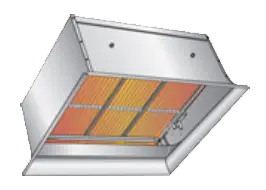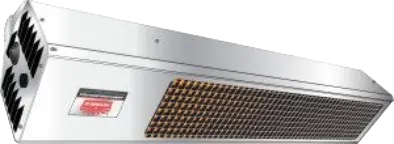Radiant Heating
Gas Radiant Heat
Radiant Heaters provide simple, spot heating to objects in the room. They work like the sun’s rays – warmth is radiated from the unit to objects or people in its path. You have to be near the heater, so they don’t warm entire garages like most electric heaters. They’re also efficient and heat more quickly than other types of heaters. Like radiant heaters, they’re ideal for people who want to heat specific areas like a work station.
Indoor Radiant Heating
Most people who own radiant floor heating feel that the more important advantages are comfort and quite operation. Radiant floor systems allow even heating throughout the whole floor, not just in localized spots as with wood stoves, hot air systems and other types of radiators. The room heats from the bottom up, warming the feet and body first. Radiant floor heating also eliminates the draft and dust problems associated with forced-air heating systems.
“High-Intensity” Infrared Heaters
Similar to radiant heaters, infrared wavelength technology provides targeted warmth to your work area. Since they don’t use a fan, they’re known for their silent operation, but can’t disperse warm air throughout your space like a fan-forced electric heater. Infrared and radiant heaters are great options for small areas or spaces where heat can be directed to one location.

Infrared Space heaters are best applied in buildings with high ceilings and areas where there is a high demand for a heat load, such as loading docks or bay areas

Patio Heaters are used to provide indoor and outdoor spot heating to applications such as restaurant patios, decks and vestibules

Portable heaters are generally mounted to a 20 lb., 10-inch base LP tank and are designed for outdoor or inside areas under construction. They are ideal when temporary heat is required or where a permanent energy source is not available

